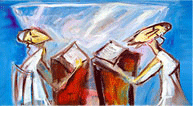Recent Posts
- The Reflective Light of Kabbalah (Jewish Mysticism)
- Beginning Kabbalah in the Comfort and Privacy of Your Own Soul
- Kabbalah Beliefs Already Undergird Your Belief System
- The Only Kabbalah Is God’s Kabbalah
- Kabbalah Practice and Discipline
- Kabbalah Books and Primary Source Texts
- Kabbalah Symbols: 72 Names
- Kabbalah Meditation and Study
- Kabbalah, Reiki, and Energy
- The Mystical Nature of Spiritual Energy
- Kabbalah Astrology, Chronology, and Linguistics
- Two Meanings of Lucky Eye and Evil Eye
- The Future in Prophetic Kabbalah
- Teaching Kabbalah for Everyone
- The “Kabbalah Centre” Brand
- Kabbalah Jewelry Represents Availability
- The Covenant Behind a Kabbalah Ring
- A Case Study on Kabbalah Red String
- The Spiritual Energy of the Jewish Hamsa
- The History of Kabbalah Tattoos
- Privacy Policy
- Contact Us
The Only Kabbalah Is God’s Kabbalah
“God’s kabbalah” is the invisible, self-consistent foundation that reconciles all contradiction in visible kabbalah. God’s kabbalah is pure light, while visible kabbalah is reflected light. God’s kabbalah is of Other, while visible kabbalah is of Self. One who seems to have apprehended God’s kabbalah has only apprehended its reflection. Yet again, what is apprehended is still God’s kabbalah incomplete and sufficient. Plato, who studied a Mishnaic-foundation kabbalah, also preserves this distinction.
Jewish kabbalah, and the occasionally observed Christian and Islamic kabbaloth, presupposes a monotheistic God. Avraham Avinu, the patriarch, discovered foundational principles of monotheism four thousand years ago, as described in Breshith (Genesis); and the ancient book, Sefer Yetzirah, accurately preserves his tradition. In the Sefer Yetzirah, the nature of God as “echad” is revealed: namely, a unity which admits of diverse manifestations, such as the ten sefiroth. This is the same echad as in the Jewish confession of faith, the Shma. It is generally safe to recognize God as the omnipresent yet transcendent Other, existing within all things to order and finish them.
32 Paths and One God: The Kabbalah Tree of Life
The Sefer Yetzirah is very short, only six chapters (or “pirqe”, singular “pereq”). The Sefer Yetzirah begins with the self-existent One ordering the cosmos “in 32 paths”; describes manifold patterns throughout the cosmos (usually with a numeric base); and concludes that Avraham Avinu received all these things from the self-existent One, that is, received them as God’s kabbalah. In each pattern the nature of echad, unity admitting of diversity, is seen.
The 32 paths are 10 sefiroth (which can mean “numbers” or “digits”) and 22 letters (of the alefbeth, the Hebrew alphabet). The very basic fact that there are 32 communication symbols in the language is only the pshat or plaintext meaning of this passage. Each of the 32 symbols is taken, in the Sefer Yetzirah or its commentaries, to represent a different foundational principle of the universe, and the exactness of the number is repeatedly emphasized.
For instance, the sefiroth are 10 because 10 names of God in Hebrew Scripture introduce the Sefer Yetzirah (thus they are 10 emanations or manifestations of one God); the letters are 22 because phonological analysis reveals three groups with the additionally symbolic counts of 3, 7, and 12. The kabbalah tree of life displays these 32 “paths” as 10 nodes and 22 segments: and it did so long before graphical networks were mathematically classified.
72 Names and One God: The Angel of God
Another demonstration of the echad or unity in God’s kabbalah is the “72 names of God”, the long “shem hamforash” (explicit name). Kabbalists observed that three consecutive verses of Shmoth (Exodus, at 14:19-21) contained exactly 72 letters, knowing that 72 represents the diversity of the cosmos or created order. The 72 names were derived by writing the verses boustrophedon (zigzag, namely, reversing the second verse only), and reading them vertically instead of horizontally. They are not necessarily literal “names of God”, although they are manifestations of God and names of his intelligences or principles.
While each letter combination defines a diverse principle, meditation upon the sodh (secrets) of these principles is combined with meditation upon the pshat (plaintext) of the passage. The passage teaches that the malach haelohim (God’s angel), from within a fiery cloud, both protected Israel from Egypt and parted the waters of the Red Sea. As elsewhere, the malach is called by the ineffable name of God, “Yahweh”, because “My Name is in Him”. The same God is manifested in 72 (vertical, disjoint) paths, namely, the universal principles; and in one (horizontal, boustrophedon) path, namely, the unique messenger.
